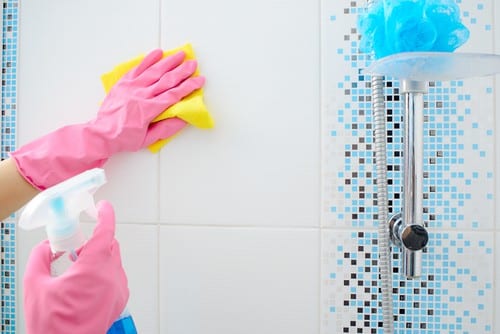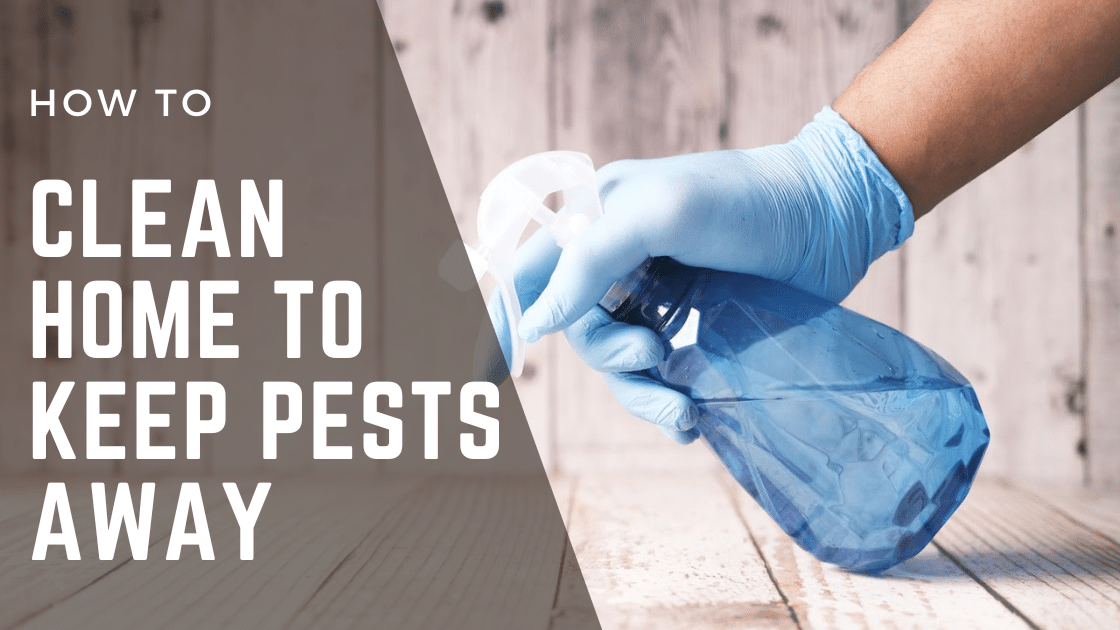Published by Ahmad Jamal on April 1, 2023 | Last updated on May 15, 2023
As Spring approaches, it is time to begin tackling your home’s cleaning. In addition to making it a pleasant place to live, regular house cleaning can help prevent pest infestations.
Pests are attracted to food, water and shelter, so keeping your home clean is essential for pest prevention. By following these simple tips, we’ll help you master How to Clean Home To Keep Pests Away!
In this CleanersAdvisor guide, you’ll master How to Clean Home To Keep Pests Away in a step-by-step method, helping you with your battle against those tiny creatures.
How to Clean Home To Keep Pests Away
One of the best ways to prevent pests from entering your home is to keep it clean. Not only will it make your home look better, but it will also help you avoid dealing with bugs in the future.
- Wipe down the surfaces in your kitchen and bathroom regularly. This will reduce the risk of mold and mildew growth and clogged drains. You can use vinegar and essential oils on the bathroom counters and floors to prevent the spread of germs.
- Vacuum and sweep your floors daily. This will remove the crumbs and dust that can attract insects like mice and cockroaches to your home.
- Clean the kitchen appliances such as the stove, microwave and refrigerator on a regular basis. These can collect a lot of food and grease, and pests love to eat this stuff.
- Store food in sealed, pest-proof containers and dispose of all spoiled and expired foods.
These practices will discourage pests from hanging out in your kitchen and causing trouble for you.

Proper Garbage Disposal and Storage Practices
The proper garbage disposal and storage practices are essential to maintaining a pest-free home. When waste accumulates, it creates a prime habitat for critters and insects.
Keep trash and recyclables in containers with lids to prevent pests from entering and contaminating the contents. Rinse these containers to remove any food remnants that may attract pests.
Be sure to thoroughly wash out your bins after each use. A good rinse helps to kill any bacteria or odors that have built up on the sides of your bin.
If you can, compost your food scraps, peels and discarded coffee grounds to reduce the amount of waste sent to landfills. This will also save you money on your garbage bill.
Another important thing to remember when using your garbage disposal is not to put anything down that’s not biodegradable. These items can clog up the drain and make your plumbing work harder.
Some common foods that you should never place down the disposal include banana peels, celery and paper towels. These materials are fibrous and can actually clog the drain and your plumbing.
Using Natural Repellents to Discourage Pest Activity
These products work by emitting a scent that pests hate into the air, giving them the impression that the area is not safe to be in.
A few common repellents include citronella, oil of lemon eucalyptus, and chrysanthemum oil. However, these products need to be applied at regular intervals, and they can be costly to use.
Another way to prevent pests is by removing their food sources. This is important because pests will often enter homes where they can find food and water, so it’s best to eliminate all potential food sources in and around your home.
Keep all storage areas clean and free of crumbs and other food debris. This includes countertops, cabinets, and even the top of your refrigerator.
Seal up all spaces from outside elements, such as gaps between window sills and door frames. This can be done quickly and easily by utilizing simple nails or staples to attach molding around the gap.

Sealing Up Potential Entry Points for Pests
Pests can enter your home through cracks and gaps much smaller than you might think. This capability makes pest exclusion crucial for keeping them from making their way inside.
Taking the time to seal up potential entry points will significantly reduce the chances of an infestation occurring. Some of the most common areas to check for holes are doors, windows, and siding.
Once you identify the openings, use a quality caulk to seal them. Alternatively, you can use foam fillers or cement to plug them.
Many of these small openings may be hidden in dark corners, behind shrubbery, or under outdoor landscaping. This means they can be a little tricky to locate.
In addition to inspecting your home for obvious openings, you should also pay attention to utility openings where pipes and wires enter the foundation or siding. Using caulk or cement to seal these is essential for reducing the likelihood of insects and other pests making their way into your home.
Other ways to prevent pests from entering your home include storing foods and other materials in airtight containers, repairing weather seals on window perimeters, and eliminating loose spills or messes. These practices are essential in keeping ants, cockroaches, mice, and other pests from making their way inside your home.
Regular Pest Control Treatments
Pests, whether they are insects, rodents, or other animals, can cause thousands of dollars of damage to your home. Keeping these pests out of your home by using regular pest control treatments is an essential part of making sure that you don’t have to pay for expensive repairs in the future.
Termites and bed bugs are two of the most common types of pests that you can come across in your home. These pests can be especially troublesome, as they can cause serious structural damage to your property if left untreated.
Tips for Identifying and Removing Common Pests
Getting rid of pests is an important step to take when trying to keep your home free of unwanted visitors. Luckily, there are many effective strategies for dealing with pests.
Identifying the type of pest is a crucial first step in determining the best methods for getting rid of them. Some common pests include cockroaches, ants, silverfish, fruit flies and carpet beetles.
When identifying a particular pest, look for signs of their presence around your home. This can include droppings, scratch marks, gnaw marks or black spots on bedding that indicate bed bugs.
It’s also a good idea to check for any unusual sounds and smells. If you hear rustling or scratching in walls or on the roof, rodents might be building a nest somewhere nearby.
Another sign of a pest problem is the appearance of termite wings on windowsills or in wall cavities. If you notice any of these signs, call in a professional to assess the situation and help you remove the pests.

To Wrap Up
This concludes our CleanersAdvisor guide on How to Clean Home To Keep Pests Away, tackling the best methods to identify and remove common pests.
However, no single guide on the world wide web can cover the whole existence of pests and how to get rid of them, but our experts are ready to answer whatever question you have.
All you have to do is ask them in the comments section below, and they’ll get back to you as soon as possible.
Here’s a video to help you with that:


![Criterion Dishwasher Reviews [According to 2023 Tests]](https://cleanersadvisor.com/wp-content/uploads/2023/03/Blog-Banner-for-Website-Content-41-350x190.png)
![Zline Dishwasher Reviews [According to 2023 Tests]](https://cleanersadvisor.com/wp-content/uploads/2023/03/Blog-Banner-for-Website-Content-42-350x190.png)

![GE Dishwasher Reviews [According to 2023 Tests]](https://cleanersadvisor.com/wp-content/uploads/2023/03/Blog-Banner-for-Website-Content-37-350x190.png)
![Miele Dishwasher Reviews [According to 2023 Tests]](https://cleanersadvisor.com/wp-content/uploads/2023/03/Blog-Banner-for-Website-Content-34-350x190.png)
![Cove Dishwasher Review [According to 2023 Tests]](https://cleanersadvisor.com/wp-content/uploads/2023/03/Blog-Banner-for-Website-Content-31-350x190.png)